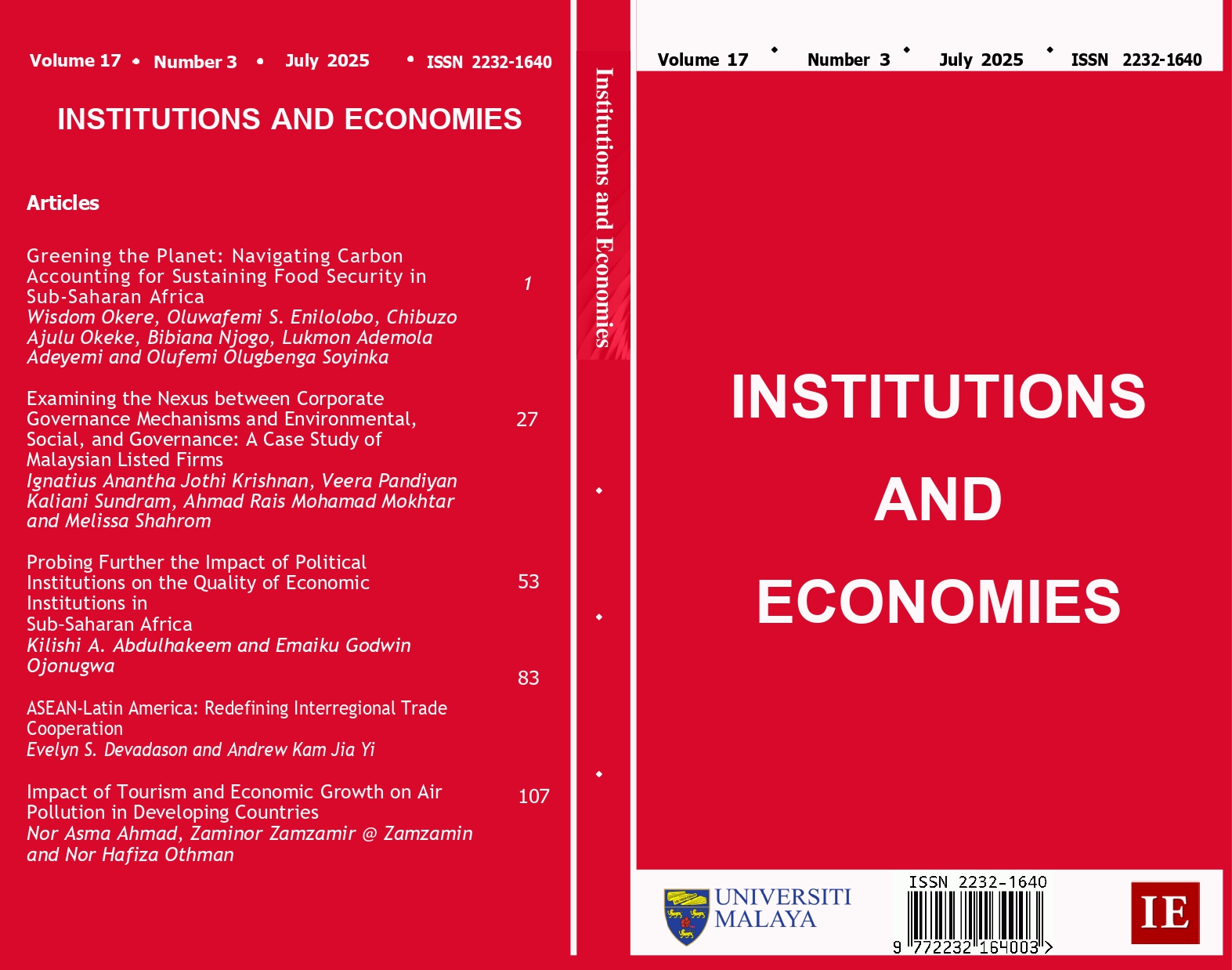Examining the Nexus between Corporate Governance Mechanisms and Environmental, Social, and Governance: A Case Study of Malaysian Listed Firms
Main Article Content
Abstract
The study examines the influence of corporate governance propositions
concerning board composition and characteristics, board deliverables, and board
cognitive and experiential diversity on the environment, social and governance (ESG)
performance of publicly listed companies on the Main Board of Bursa Malaysia. The
board’s composition and characteristics are measured by members’ performance and
diversity, encompassing nationality, gender, age, and ethnicity, followed by industry
knowledge, technical skills, emotional intelligence, persuasive skills, and diverse insights.
The board deliverables are measured by how well the members enact ESG purposes
within the company, connecting ESG purpose to company strategy, ownership of ESG,
compensation metrics for championing ESG purposes, and exemplifying what the
company is doing to fulfil its corporate purpose. Lastly, board cognitive and experiential
diversity is measured with awareness of critical ESG issues, ability to articulate and
communicate ESG strategic plans, adequate knowledge of core sustainability subjects, risk
material disclosure, emerging-area regulations, and stance on social and political activity.
The final data sample consists of 119 Bursa Malaysia companies with ESG disclosure.
The findings indicate that the board composition, characteristics, and deliverables enhance
ESG performance. However, board cognitive and experiential diversity is negatively
related to ESG performance. This study provides new insights into the importance of board composition, characteristics, and deliverables towards ESG performance in the Malaysian context.
Downloads
Article Details
Submission of a manuscript implies: that the work described is original, has not been published before (except in the form of an abstract or as part of a published lecture, review, or thesis); that is not under consideration for publication elsewhere; that its publication has been approved by all co-authors, if any, as well as tacitly or explicitly by the responsible authorities at the institution where the work was carried out. Transfer of copyright to the University of Malaya becomes effective if and when the article is accepted for publication. The copyright covers the exclusive right to reproduce and distribute the article, including reprints, translations, photographic reproductions, microform, electronic form (offline and online) or other reproductions of similar nature.
An author may self-archive the English language version of his/her article on his/her own website and his/her institutions repository; however he/she may not use the publishers PDF version which is posted on www.ijie.um.edu.my. Furthermore, the author may only post his/her version, provided acknowledgement is given to the original source of publication and a link must be accompanied by the following text: The original publication is available at www.ijie.um.edu.my.
All articles published in this journal are protected by copyright, which covers the exclusive rights to reproduce and redistribute the article (e.g. as offprint), as well as all translation rights. No material published in this journal may be reproduced photographically or stored on microfilm, in electronic database, video disks, etc., without first obtaining written permission from the publishers. The use of general descriptive names, trade names, trademarks, etc., in this publication, even if not specifically identified, does not imply that these names are not protected by the relevant laws and regulations.
The copyright owners consent does not include copying for general distribution, promotion, new works, or resale. In these cases, specific written permission must first be obtained from the publishers.

